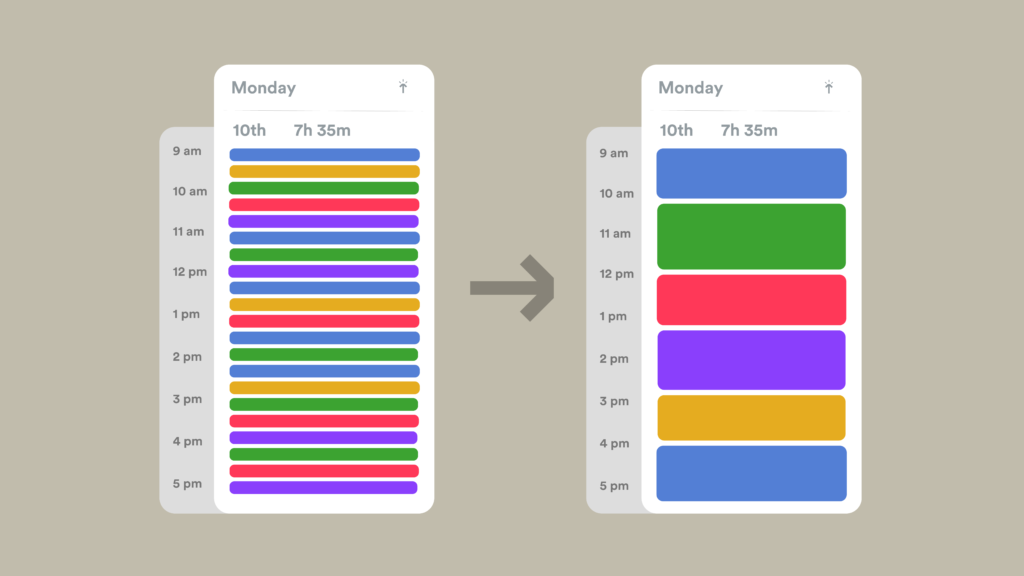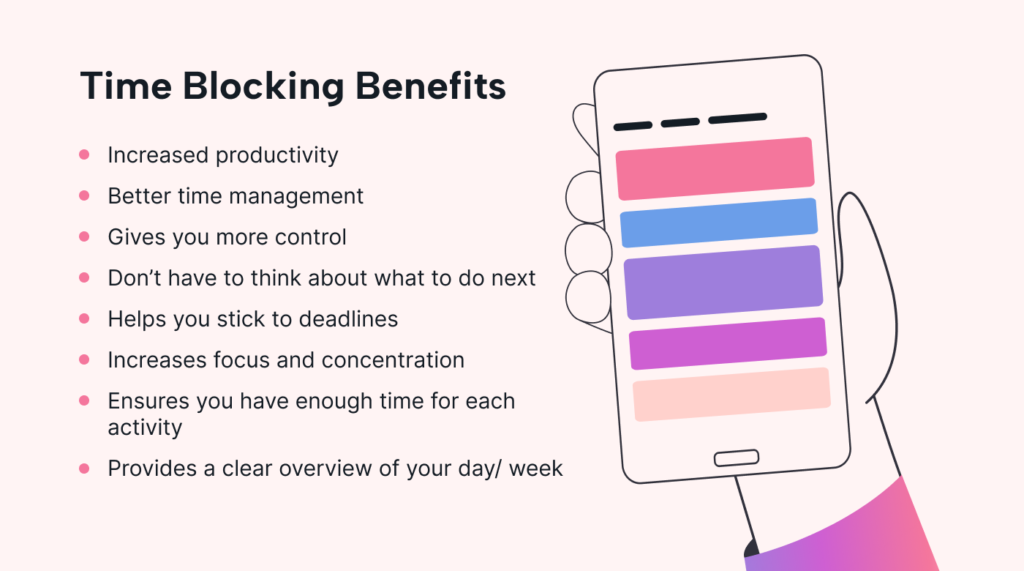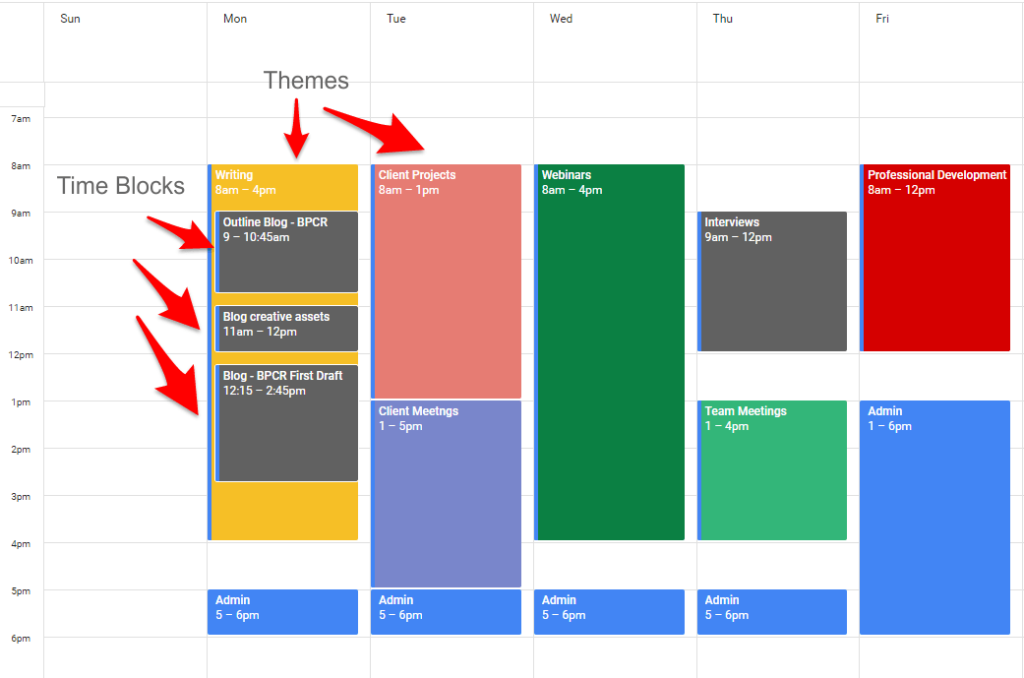If there’s one thing that can be said about the modern workplace, it’s this:
"If you don’t control your schedule, it’ll control you."
How do you balance the necessary evils of meetings, email, team chat, and “busy work” with focused time for the things you truly care about? Since becoming a digital hermit isn’t an option for most of us, we need concrete strategies to help us focus in a world designed to distract us.
That’s where time blocking comes in.
Try time blocking if you:
- Juggle many different projects/responsibilities
- Spend too much time in “reactive mode”, responding to emails and messages
- Find their day chopped up by meetings
- Battle constant interruptions throughout the day
- Struggle to find the time and mental space for big-picture thinking

Time blocking is a time management method that asks you to divide your day into blocks of time. Each block is dedicated to accomplishing a specific task or group of tasks, and only those specific tasks. Instead of keeping an open-ended to-do list of things you’ll get to as you can, you’ll start each day with concrete schedule outlining what you’ll work on and when.
The key to this method is prioritizing your task list in advance; a dedicate weekly review is a must. Take stock of what’s coming up for the week ahead, and make rough sketch of your time blocks for each. At the end of every workday, review any tasks you didn’t finish; as well as any new tasks that have come in, and adjust your time blocks for the rest of the week accordingly.
With days that are time blocked in advance, you won’t have to constantly make choices about what to focus on. All you need to do is follow your time blocked schedule. If your get off-task or distracted, simply look at your schedule and get back to whichever task you blocked off time for.

As you get started with time blocking, think of each block as an uninterrupted chunk of work where you can tackle critical projects and get into deep work.
Identify what you need to work on for the day
Like most time management strategies, the first step is to identify what you actually need to get done on a given day or week. If you don’t already, practice keeping and updating a to-do list with all of your important work. Keep in mind, you don’t just need to know what to work on; you also need to know what to prioritize. Make sure you understand what your most important tasks are, so you get them done that day.
Even with time blocking, there maybe days where you can’t get to all of your work. If you don’t know what work to prioritize, you won’t have a clear sense of which tasks you must finish today and what you can defer until tomorrow.
Figure out when you’re most productive
When you create a time block, you’re scheduling a period of time to tackle work; whether that’s answering emails, attending meetings, checking off to-dos, or something else. Do you feel energized in the morning? If so, consider scheduling the work that requires the most energy; whether that’s focused work of meetings, before lunch. Do you feel sleeping in the early afternoon? Schedule smaller tasks; like answering emails, so you can maintain productivity. Do you get a second wind in the late afternoons? Save your important tasks for that period, and make sure to minimize distractions that could interrupt your flow.
After you’ve been time blocking for a few days, evaluate how you’re feeling at the end of the day. Are you feeling drained? If so, you may have misjudged when you’re most productive during the day. Try to reschedule your work blocks to see if that helps.
Schedule your time blocks
Once you know when you’re most productive, and you’ve had a chance to time block your meeting schedule, it’s time to schedule ad set the rest of your time blocks. Think through the priorities you have for the day, and schedule dedicated focus time for each batch of tasks in your calendar.
Block off personal time
Just like scheduling dedicated time for work, creating a time block for personal activities can help you stick to them. In addition to scheduling lunch, give yourself quick breaks for personal time, everyday activities, or any ither daily tasks you need to get done, like picking your kips up from school or working out in the early afternoon.
Allow for unexpected interruptions or works
Time blocking fails when you don’t have room to navigate any surprises in your day, like unexpected tasks that have to get done as soon as possible or last-minutes meetings that get schedule during an important block of focus time. Make sure any new task that crops up is higher priority than what you’re currently working on. Always remember what your wok priorities are, then rearrange your schedule accordingly.
Plan for lost time
If you’re working from home, you’ll definitely get distracted by a roommate, child or pet. That’s natural and OK! Consider dedicating certain time blocks for focus work and others for deep work. When you’re checking your email and going through your daily task, you can be interrupted without that distraction setting you back. It might take a while to figure out the best strategy to help you minimize distractions. Keep adjusting and readjusting your time blocks as necessary. Over time, you might find that you lose less time with this time management technique.

Next step: deciding what to do with all of your extra time
Time blocking can help you be more intentional about your time. By dedicating specific blocks of time to important work, you can focus on getting things done instead of losing time and energy to multitasking and procrastination. But like all time management strategies, time blocking is only effective if you have a clear sense of what you need to do and by when.





Thanks for sharing. I read many of your blog posts, cool, your blog is very good.
Your point of view caught my eye and was very interesting. Thanks. I have a question for you. https://www.binance.com/en-NG/register?ref=JHQQKNKN